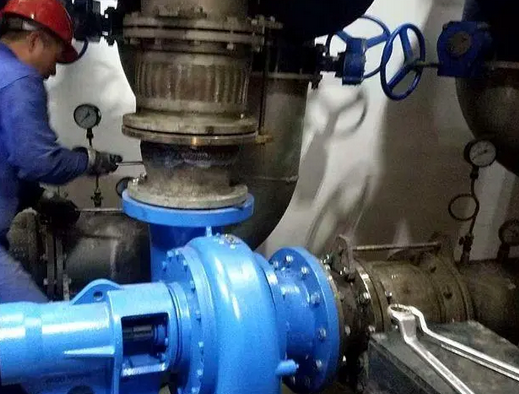Installation accuracy of centrifugal pump
The installation accuracy of the centrifugal pump is one of the key factors to ensure that the pump can operate efficiently and stably. The following is a detailed description of the installation accuracy of the centrifugal pump:
I. General requirements
The installation of the centrifugal pump should be carried out in strict accordance with relevant standards and specifications to ensure that the connection between the pump and the motor, base, pipeline and other components is tight, accurate in centering, and well sealed. During the installation process, special attention should be paid to controlling the installation accuracy to avoid performance degradation or failure due to improper installation.
2. Specific installation accuracy requirements
Installation accuracy of the shaft and the sealing chamber
The straightness of the shaft: generally not more than 0.05mm to ensure the stability of the shaft during operation.
Horizontal movement of the shaft to the sealing chamber: For multi-stage pumps, the horizontal movement of the shaft to the sealing chamber should be checked after installation, usually by the metering method, to ensure that the movement is within the allowable range.
The clearance between the sealing sleeve and the shaft: generally 0.04~0.06mm, to ensure the sealing effect and avoid leakage or friction caused by excessive or too small clearance.
Coupling installation accuracy
Coupling clearance: The coupling clearance between the motor shaft and the pump shaft should be adjusted to 3~5mm to ensure the alignment and transmission efficiency between the two shafts.
Coaxiality error: The radial coaxiality error should be controlled within 0.03~0.05mm to avoid vibration and noise caused by excessive coaxiality deviation.
Coupling alignment: The coupling should be aligned during installation to ensure that the two shafts are on the same axis. The alignment method includes using tools such as a level ruler and a gap gauge.
Installation accuracy of other key components
Moving ring installation: After the moving ring is installed, it must be ensured that it can move flexibly on the shaft or sleeve to avoid wear and leakage caused by jamming.
Spring compression: The spring compression in the mechanical seal must be carried out as required. Too large or too small will affect the sealing effect. The error is generally allowed to be within ±2mm (large spring seal) or ±0.5mm (small spring seal and bellows seal).
Gland installation: The gland screws should not be tightened too much to avoid deformation of the static ring and leakage. They should be tightened in a certain order (such as 1, 3, 4, 2).
Precautions during installation
It is forbidden to knock the coupling and other key components to avoid damage or affect the installation accuracy.
Before installation, the pump, motor, base and other components should be cleaned and inspected to ensure that there are no impurities and damage.
During the installation process, special tools and measuring tools should be used for measurement and correction to ensure that the installation accuracy meets the requirements.
After the installation is completed, a trial run and debugging should be carried out to check whether the operating status and performance of the pump meet the requirements.





